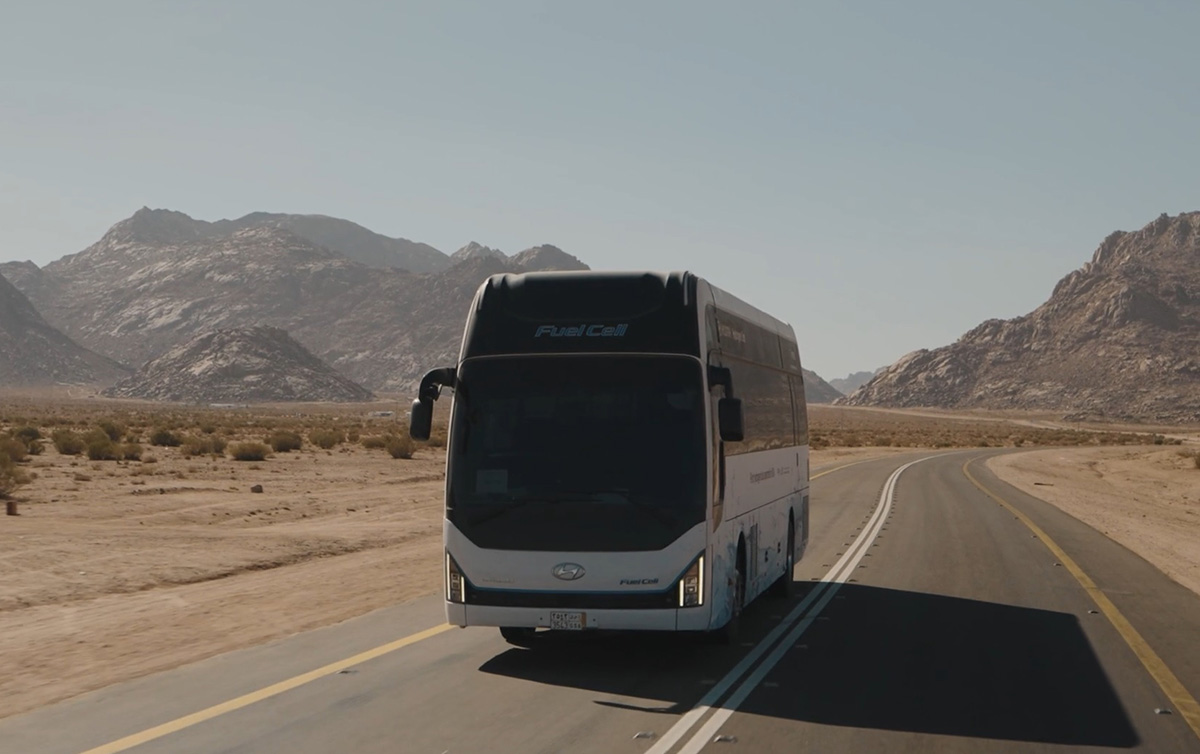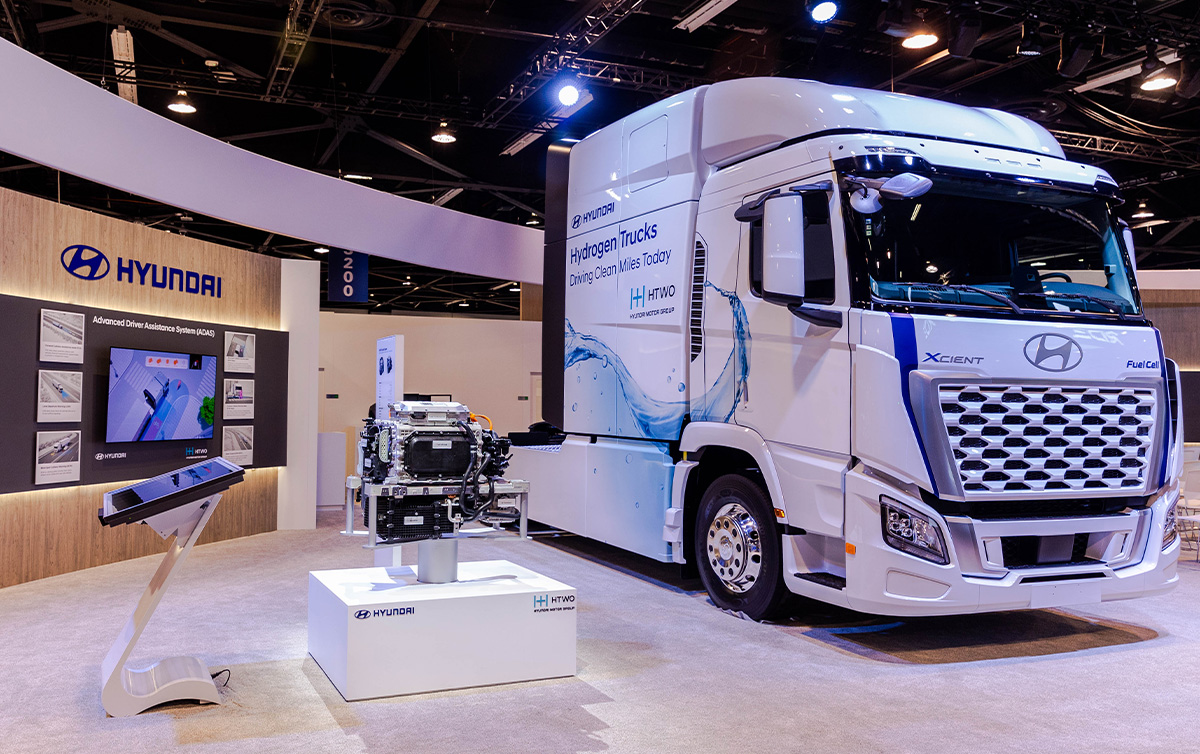Hyundai Integrates Home, Health and Mobility with New Technology at CES 2018


- Next-generation FCEV NEXO makes global debut at CES 2018
- NEXO advances autonomous driving in an eco-friendly vehicle
- Hyundai to offer 18 eco-friendly models by 2025
- Fuel cell-powered home applications highlight the ‘Hydrogen Life Vision’
- AI-enhanced ‘Intelligent Personal Cockpit’ checks driver vitals
- Hyundai announces strategic partnership with Aurora for autonomous driving
- Hyundai to bring Level 4 autonomous vehicle to market by 2021
LAS VEGAS, Jan. 8, 2018 - Hyundai Motor will highlight new technology concepts at CES 2018, all focused on connecting future technology with evolving mobility solutions, and share its latest achievements to advance its future mobility vision ? clean, connected and freedom in mobility - announced a year ago.
Under the theme of “Connected to Future Mobility”, Hyundai presented its next-generation fuel-cell electric vehicle, a vision for hydrogen-powered life and an artificial intelligence-based personal cockpit concept at a press conference held on Jan. 8 in Las Vegas.
Hyundai Motor Company revealed the name of its newest fuel-cell SUV, the NEXO, and introduced a suite of advancements in autonomous driving capabilities all packaged in an eco-friendly powertrain as a testament to fulfill its ”Clean Mobility“ vision announced last year at the CES.
In addition, Hyundai showcased the “Hydrogen Life Vision” featuring home applications for hydrogen power that move sustainable transportation advancements into even more everyday uses.
Hyundai also unveiled its concept for how future vehicles will be controlled via the “Intelligent personal Cockpit” that voice-enables virtually every command. The concept showcases how the cockpit serves as a personal assistant and even checks the driver’s vital signs so the vehicle can take action if the driver is stressed.
“While it’s difficult for a single company to predict how all these latest changes may impact the future of our industry, we all understand that technological challenges and innovations are a never-ending process that will continue until we realize a mobile society of maximum convenience, zero accidents and no emissions,” Dr. Woong-chul Yang, Vice Chairman and the head of R&D, said during the press conference.
As part of efforts to realize its vision of ‘Freedom in Mobility’, Hyundai today announced a strategic partnership with Aurora Innovation, a renowned autonomous-driving startup, to bring Level 4 autonomous driving Hyundai vehicles to market by 2021. The two parties have agreed to begin their pilot tests with the newest fuel-cell SUV, NEXO.
All of Hyundai’s latest advancements can be experienced at booth 6329 in the North Hall of the Las Vegas Convention Center Jan. 9-12, 2018.
▌Hyundai NEXO: Autonomous Driving Fuel Cell Electric Vehicle
The newest model in Hyundai’s eco-vehicle portfolio is called NEXO, and it will take the spotlight in the Hyundai display at CES 2018. NEXO, equipped with a revolutionary fuel-cell system and intelligent Advanced Driver Assistance Systems (ADAS), is truly a glimpse at the future of transportation. The zero-emission FCEV runs on hydrogen and proves that even an eco-friendly powertrain can fully support the energy demands of autonomous driving.
NEXO features significant advancements in automated driving. In an industry first, NEXO debuts Blind-spot View Monitor (BVM), which shows drivers the rear and side view while changing lanes in either direction. The technology will allow the driver to focus on the road ahead even while changing lanes without turning their heads.
In a first for Hyundai, NEXO features Lane Following Assist (LFA), to help keep NEXO centered in its lane of travel. LFA can keep NEXO centered at speeds between 0 and 90 miles per hour on both highways and city streets. When paired with Hyundai’s Highway Driving Assist (HDA), which utilizes sensors and map data to ensure safe operation as well as automatically adjust speed in limited environments, drivers will be able to traverse long distances with greater ease and improved safety. NEXO, equipped with these systems, will be a Level 2 autonomous vehicle.
NEXO also includes Remote Smart Parking Assist (RSPA) that enables the vehicle to autonomously park or retrieve itself from a garage or parking space with or without a driver in the car. RSPA can even back a NEXO into a perpendicular parking spot while the driver stands on the curb and pushes a button on the key fob.
NEXO is Hyundai’s second-generation mass produced fuel cell electric vehicle that will be available in select markets around the world starting in 2018. Improvements in the air supply system performance at high altitudes and refueling times, along with overall efficiency and fuel economy put the NEXO in a class all its own, with an estimated target range of 370 miles. NEXO will help to fulfill Hyundai’s goal of introducing 18 eco-friendly models to global markets by 2025.
▌Hydrogen Life Vision: Zero Emission Power from Mobility to Home Applications
In addition to the latest vehicle technology, Hyundai connects progress on hydrogen-powered mobility to hydrogen-powered applications in the home via a section of the booth dedicated to the Hydrogen Life Vision. The distinct zone within the display demonstrates Hyundai's vision for a hydrogen society. The zone will feature a NEXO supplying electricity to a conceptual household to illustrate the capability of a fuel cell powertrain that extends well beyond the conventional application of driving.
Many household items found in the kitchen, home garden and living room can be powered by a fuel cell electric powered vehicle. The Hyundai booth also demonstrates NEXO’s ability to provide pure water to grow vegetation because fuel cells emit only water (or water vapor) as a byproduct. While conventional vehicles with internal combustion engines can only minimize emission, NEXO can produce water for multiple uses.
In Hyundai’s vision, the zero-emission energy source is not confined to travel; it is equally useful in providing energy to every-day home applications. The Hydrogen Life Vision removes stress on the electric grid, provides assistance during peak demand periods and assures home owners their appliance and electronic needs will function smoothly as long as their hydrogen tank is full. This concept truly puts the vehicle at the heart of the home.
Another benefit of NEXO displayed in the Hydrogen Life Vision zone is its air purifying capability. As fuel cell systems require highly pure air to operate, NEXO removes 99.9 percent of fine dust from the air as it goes through the system's filter. As NEXO continues to travel, therefore, the driver of the vehicle can be confident that he/she is improving the environment around them.
▌Intelligent Cockpit and Wellness Care: Caring for the Driver as well as the Vehicle
Rounding out Hyundai’s future technology demonstrations is a reimagined view from the driver’s perspective inside the Intelligent Personal Cockpit. The Intelligent Personal Cockpit showcases Hyundai's progress in connected car technology development. The cockpit employs multiple cutting edge technologies ranging from voice recognition Artificial Intelligence (AI), Internet of Things (IOT) technology and even driver stress detection.
New voice-recognition technology from SoundHound allows drivers to voice-control frequently used in-vehicle functions such as air-conditioning, sunroofs and door locks, but that’s just the beginning of an entire suite of new voice-control capabilities inside the Intelligent Personal Cockpit. Car-to-Home IOT capability extends the reach of the driver’s voice beyond mobile applications and into the home environment. With voice commands, a driver can not only play music in the car, but also turn on the lights at his/her home and stream that same song right to their home audio system for a seamless transition from driveway to living room.
The Intelligent Personal Cockpit goes a step beyond most other voice recognition technology with the ‘multiple-command recognition’ function. For example, when the user says, “Tell me what the weather is like tomorrow and turn off the lights in our living room,” the system recognizes two separate commands in the same sentence and completes each task separately.
The Intelligent Personal Cockpit also acts as a proactive assistant system, predicting the driver’s needs and providing useful information. For example, the system may give an early reminder of an upcoming meeting and suggest departure times that account for current traffic conditions.
Yet another important technology embedded in the Intelligent Personal Cockpit is Wellness Care. The function utilizes two sensors placed on the steering wheel and the seat.
The steering wheel bio sensor and seat heart rate sensor monitor heart rate for sudden changes and may detect driver stress level.
If the sensors detect stress, the system is equipped to take action and provide access to online visual consultation with a doctor or simply turn on a soothing playlist while dimming the cabin lighting for a more soothing driving experience.
Developed by Hyundai’s In-house start up called Tune!t, there are two additional advanced features. "Smart Tuning Package" enables the cockpit to turn into a personalized space. The seat position can be adjusted to the driver’s height, and music is chosen to driver’s preference using wireless IOT technology. Another impressive feature is that you can open the door of the vehicle simply by knocking twice.



